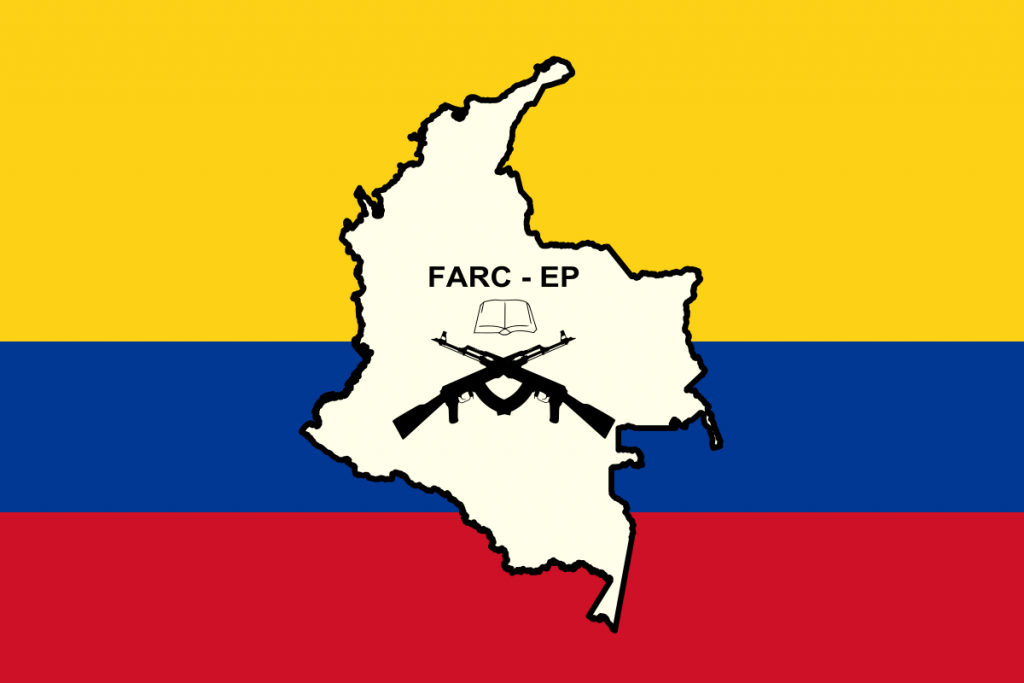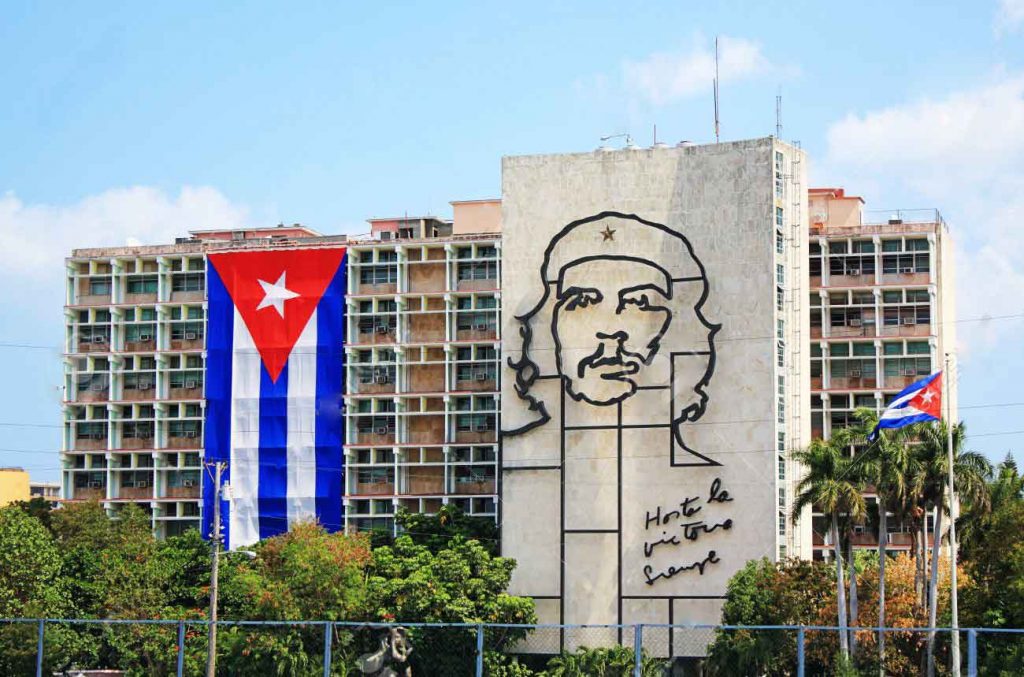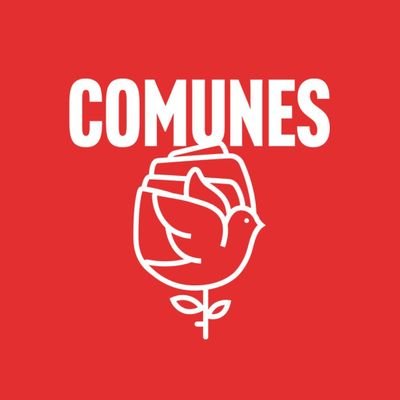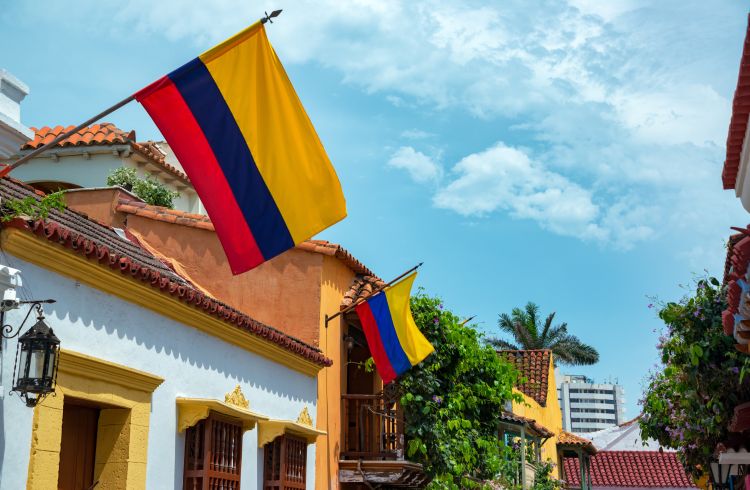The Colombian civil war, which to date is not only the longest-running civil war in South America, but amazingly in the whole world mostly came to a partial end with the historic peace process between the government, and the Revolutionary Armed Forces of Colombia, better known by their Spanish acronym the FARC.
The peace deal that led to the demobilization of the FARC has resulted in them transitioning into a political party known as the Common Alternative Revolutionary Force (which means it still gets to keep its FARC acronym), which is guaranteed at least 10 seats in the national assembly until 2026. The plan being for the former Marxist army to pursue their goals of social justice, and agrarian reform through political means rather than through the barrel of the gun.
Whilst the peace process has been viewed extremely positively by most Colombians and the rest of the world, the politics of Colombia are far from simple, and alas the civil war continues through a number of continuity armed groups, right-wing paramilitaries, and drug cartels that have rushed in to fill the power vacuum created by the withdrawal of the FARC.
What though led to the Colombian Civil War, the longest civil war in the world.
Table of Contents
- The Roots of the Colombian Civil War
- What was La Violencia in Colombia?
- The start of the Colombian Civil War
- The Colombian Civil War in the 1970’s
- The height of the Colombian Civil War in the 1980’s
- The left-wing insurgency into from the 1990’s
- The 2017 Demobilisation of the FARC
- Who is currently active in the Colombian Civil War?
- When will the Colombian Civil War end?
The Roots of the Colombian Civil War
The current Colombian Civil War is often called the “Colombian Conflict”, this is in order to distinguish it from previous Colombian Civil Wars of which there have been 9 since 1839.
The modern Colombian Conflict, or Civil War is generally considered to have started in 1964, but its roots lay clearly in the “La Violencia”, or the 8th Civil War of the country between 1948-58.
What was La Violencia in Colombia?
La Violencia quite literally, “The Violence” was a ten-year civil war in Colombia between the Colombian Conservative Party and the Colombian Liberal Party, two parties that in essence were not all that different from each other.
What caused this conflict? La Violencia is considered by many to have began after the assassination on 9 April 1948 of Jorge Eliécer Gaitán, a Liberal Party presidential candidate for the 1949 November election. Others have opined that it started because of the Conservatives return to power in 1946, but regardless of the causes it was to prove devastating.

Ideologically the Liberal Party were considered, well more Liberal than the conservatives, but in the end it was extremely factional, with both sides having well funded militias and most of the fighting occurring in the countryside.
It has been stated by many that the Catholic Church supported the Conservative Party, something that would lead to later mistrust and be another factor in what would also affect left-wing politics own the country.
Who won La Violencia in Colombia? In some respects everyone and no one. Over 200,000 people died, or 2 percent of the population, with the end result being power-sharing, or rather a fixed two-[arty system. This left many of the revolutionaries disappointed and would sow the seeds for the next period of conflict within the country.
The start of the Colombian Civil War
In the early 1960’s the Colombian military began to indiscriminately attack rural peasants, due to a perceived communist threat, which at the time did not really exist. This led to the formation of the Revolutionary Forces of Colombia, or as they are more famously known the FARC.
The FARC had its roots in the Liberal peasant movement from the previous civil war, rather than outside interests, although they were linked to the Colombian Communist Party, itself aligned with the Soviet Union. They would continue their battle until 2017 through this incarnation.
1964 also saw the formation of the National Liberation Army (ELN), founded by Fabio Vásquez Castaño, who were not just inspired by, but also trained in Cuba to ferment a Guevarist revolution within the country. They were also heavily influenced by left-wing urban intellectuals, rather than the peasantry.
To read about Guevarism click here
Despite the existence of two left-wing guerrilla groups the 1960’s remained relatively tame, with most attacks being low-level and in remote areas of the country.
The Colombian Civil War in the 1970’s
By the 1970’s communist and left-wing insurgencies were sweeping through the Americas and had led to numerous right-wing dictatorships and paramilitaries supported by the Central Intelligence Agencies (CIA). Their ferocity only helped to popularise militant groups and both the FARC and ELN saw huge growth.
The allegedly fraudulent National Front election of the 1970’s also saw the formation of a third major left-wing player, M-19, or the 19th April Movement. Not all members were communist though and many fell under the democratic and nationalist banner. They were though the first urban guerrilla group and were later to play a key-role in the Colombian civil war.
The height of the Colombian Civil War in the 1980’s
The FARC, ELN, and M-19 were to be joined by other groups in the 1980’s, such as the People’s Revolutionary Army (Spanish: Ejército Revolucionario del Pueblo, ERP), the Quintin Lame Armed Movement (Spanish: Movimiento Armado Quintin Lame, MAQL) and the Workers Revolutionary Party of Colombia, but the big change of the 1980’s was cocaine and a certain Pablo Escobar.
It would be impossible to go into every element of the war on drugs and that of Pablo Escobar, but Colombia was to become an absolute war zone. It is also known that during this period cartels often worked with communists, while the CIA often worked with right-wing groups against the “greater enemy of communism”.
During this period it was the M-19 movement who were to become the pre-eminent left-wing force. In the 1970’s they had stolen the sword of Simon Bolivar and in 1980 they stormed the embassy of the Dominican Republic taking 14 ambassadors including from the USA hostage.
The siege was eventually ended peacefully, with all hostages released and the kidnappers being given refuge in communist Cuba.

To read about Socialist Countries click here.
The next 5 years saw negotiations between M-19 and the government and a general peace, but this was to be shattered in 1985 during the Palace of Justice siege. There group have claimed that the 35 guerrillas did it because the government had broken its promises, others have suggested more sinister motives.
True, or not Pablo Escobar has been called the mastermind of the siege, during which the M-19 lost many top commanders, but conveniently also destroyed all evidence against the Escobar clique.
By the early 90’s the group had moved to politics as the AD/M-19, which had moderate success, but this was to be far from the end of the Colombian Civil War.
The left-wing insurgency into from the 1990’s
The FARC military activity increased throughout the bulk of the 1990s as the group continued to grow in wealth from both kidnapping and drug-related activities, basically taking over from the now-defeated cartels.
During this period their strength grew to as many as 25,000 armed members, as well as urban sympathisers. They also controlled an area the size of Switzerland, and at times were largely left to run a state within a state. All the while peace talks would continue sporadically with the government, usually in Cuba.
The ELN while still much smaller also carried other activities, as well as taking part in peace talks. During this time their main foes, aside from the government were the FARC, with whom they fought over territory and control of the drug trade.
The 2017 Demobilisation of the FARC
On 23 June 2016 a ceasefire was signed between the FARC and the Government, in Havana.Under the accord, the Colombian government would support massive investment in rural development and allow the FARC’s reincarnation as a legal political party.

The FARC for its part agreed to not only demobilise, but also help end the drug trade. This though was supposed to be conformed via referendum, which was surprisingly defeated. Despite this the FARC became the Common Alternative Revolutionary Force (keeping the FARC acronym) and were granted ten seats in the Colombian parliament until 2026.
Yet, while historic this again would not prove to be the end off the Colombian Civil War, with not the only the ELN and FARC dissidents continuing the fight, but also a number of other smaller groups that were much less known.
Who is currently active in the Colombian Civil War?
THE ELN
The National Liberation Army, better known by their Spanish acronym of the ELN were formed in the early 1960s, inspired by Che Guevara’s guerilla tactics. Their official ideology can be called Christian/Catholic Communism, although like all the armed groups of the country many have accused them of simply being drug dealers and extortionists. They were always the second largest force compared to the FARC, but today and after the demobilization of the FARC are now the biggest rebel army, with an estimated force of 3000 active personnel, as well as urban supporters.
THE “NEW” FARC
As with any peace process, there are always some dissenters, and it is estimated that almost 10% of the active FARC forces (1200), as well as some leading commanders, not only rejected the peace process but decided to continue to fight. The New FARC have turned into a real nightmare for the government, with regular attacks on the army, and seemingly no sign of peace from the hardliners in the short term.
THE EPL
The Popular Liberation Army, known by its Spanish acronym of the EPL is a Colombian guerrilla group formed in 1967 that mostly demobilized in the early 90s, but as with most groups had a number that decided to continue the fight. The EPL can be considered a Maoist inspired group that disagreed with the Soviet line. Like most other groups they are accused of being a criminal organization, and their current strength is estimated to be in the low hundreds.
THE FARIP
The Indigenous Revolutionary Armed Forces of the Pacific known by their Spanish acronym of the FARIP are a guerrilla group formed by indigenous people in the rural areas of Colombia, less a revolutionary force, and more a protection force, albeit left-leaning for the indigenous ethnic minority. Estimated to again only have a few hundred active supporters, as well as a number of sympathizers.
CLAN DE GOLFO
The Clan De Gulfo, which literally means “The Gulfs Clan”, are largely a drug trafficking gang, that could also be considered a right-wing paramilitary group, they have a fighting force of around 3000 fighters, and have stepped into the huge power vacuum that arrived with the exit of the FARC.
When will the Colombian Civil War end?
Despite its continuation Colombia is now experiencing what is the most peaceful period in its existence. There is though still great inequality, corruption and the scourge of drugs. In this context the militant are likely to being going anywhere anytime soon.






